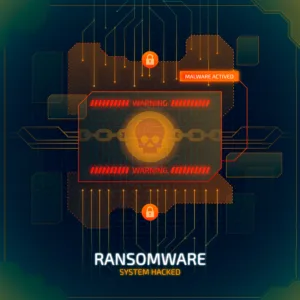
Table of Contents
In the fast-evolving landscape of cybersecurity, where threats are becoming more sophisticated and pervasive, network segmentation stands out as a crucial defense strategy. This proactive approach to cybersecurity involves dividing a computer network into smaller, isolated segments to enhance security, streamline traffic, and mitigate the impact of potential breaches.
In this blog post, we will delve deep into the realm of network segmentation, exploring its significance, implementation strategies, benefits, and the role it plays in safeguarding organizations against cyber threats.
Introduction: Navigating the Cybersecurity Terrain
In an era dominated by digital connectivity, the interconnectedness of devices and systems has paved the way for unprecedented advancements, but it has also opened the door to a myriad of cybersecurity challenges. Cyber threats, ranging from ransomware attacks to data breaches, have become more frequent and sophisticated, requiring organizations to adopt robust security measures.
Network segmentation emerges as a powerful strategy to thwart cyber threats by compartmentalizing networks into smaller, manageable units. This not only limits the lateral movement of attackers but also ensures that even if one segment is compromised, the damage is contained, preventing the infiltration of the entire network.
Understanding Network Segmentation: Unraveling the Layers
1. The Basics of Network Segmentation
At its core, network segmentation involves dividing a network into isolated segments, creating security zones that restrict unauthorized access. This can be achieved through various means, such as firewalls, virtual LANs (VLANs), and access controls. By implementing segmentation, organizations can control the flow of traffic, isolate sensitive data, and minimize the attack surface.
2. Types of Network Segmentation
Network segmentation comes in various forms, each tailored to address specific security concerns:
a. Internal Segmentation: Divides an internal network into segments to prevent lateral movement of attackers within the organization.
b. External Segmentation: Focuses on separating internal networks from external entities, safeguarding against external threats like hackers and malware.
c. Zero Trust Architecture: Assumes no entity, whether inside or outside the network, can be trusted by default, requiring verification for every user and device trying to access resources.
Implementing Network Segmentation: Building Digital Fortresses
1. Assessment and Planning
Before implementing network segmentation, a comprehensive assessment of the existing network architecture is crucial. Identifying critical assets, understanding data flows, and assessing potential vulnerabilities lay the foundation for an effective segmentation strategy. A well-thought-out plan ensures that segmentation aligns with business objectives and doesn’t impede operational efficiency.
2. Segmentation Technologies
Various technologies facilitate network segmentation, each with its strengths and use cases:
a. Firewalls: Act as barriers between network segments, monitoring and controlling traffic based on predetermined rules.
b. Virtual LANs (VLANs): Create logically segmented networks within a physical network, allowing for efficient traffic management.
c. Subnetting: Divides an IP network into sub-networks, reducing congestion and improving overall network performance.
3. Access Controls and Policies
Implementing access controls and policies is integral to the success of network segmentation. Role-based access control (RBAC) and stringent security policies ensure that only authorized personnel can access specific segments, minimizing the risk of unauthorized infiltration.
Benefits of Network Segmentation: Strengthening Cyber Defenses
1. Enhanced Security Posture
By compartmentalizing the network, organizations fortify their security posture. Even if one segment is compromised, the potential for lateral movement is limited, preventing widespread damage.
2. Reduced Attack Surface
Network segmentation significantly reduces the attack surface available to cybercriminals. With limited access points, attackers face greater challenges in navigating through the network undetected.
3. Improved Incident Response
In the unfortunate event of a security incident, network segmentation facilitates a more focused and efficient incident response. Isolating the affected segment allows organizations to contain and address the breach promptly.
4. Compliance and Data Protection
Network segmentation aids organizations in meeting regulatory compliance requirements. It ensures that sensitive data is appropriately isolated, reducing the risk of non-compliance and data breaches.
Challenges and Considerations: Navigating the Segmentation Maze
While network segmentation offers substantial cybersecurity benefits, it is not without its challenges. Organizations must navigate potential pitfalls and consider the following aspects:
1. Operational Complexity
Implementing and managing network segmentation can introduce operational complexities. Proper training and documentation are essential to ensure seamless integration and ongoing maintenance.
2. Balancing Security and Accessibility
Striking the right balance between security and accessibility is crucial. Overly restrictive segmentation may impede legitimate operations, requiring a thoughtful approach to avoid hindering organizational productivity.
3. Dynamic Environments
In dynamic IT environments where assets and configurations frequently change, maintaining an accurate segmentation strategy becomes challenging. Automated solutions and continuous monitoring are vital to adapt to evolving landscapes.
The Future of Network Segmentation: Adapting to Emerging Threats
As cyber threats continue to evolve, so too must cybersecurity strategies, including network segmentation. The future of network segmentation involves adapting to emerging threats and technologies:
1. Integration with AI and Machine Learning
Integrating artificial intelligence (AI) and machine learning (ML) into network segmentation enhances the ability to detect and respond to anomalies in real-time. These technologies can identify unusual patterns and potential threats, allowing for proactive defense.
2. Zero Trust Architecture Evolution
The evolution of Zero Trust Architecture will likely play a pivotal role in the future of network segmentation. Continuous verification and dynamic access controls will become more sophisticated, ensuring that trust is never assumed and always verified.
3. Cloud Security and Virtualized Networks
As organizations increasingly migrate to the cloud and adopt virtualized network environments, network segmentation strategies will need to evolve to secure these dynamic and distributed infrastructures effectively.
Conclusion: Building Resilience in a Connected World
In conclusion, network segmentation emerges as a cornerstone in the realm of cybersecurity, offering a proactive and effective defense against the ever-expanding landscape of cyber threats. By dividing networks into manageable segments, organizations can fortify their defenses, limit the impact of breaches, and adapt to the evolving nature of cyber threats.
As we navigate the digital age, where connectivity is both a boon and a potential vulnerability, the importance of network segmentation cannot be overstated. It is not merely a security measure; it is a strategic imperative for organizations looking to build resilience, protect sensitive data, and stay one step ahead of cyber adversaries. Embracing network segmentation is not just about securing networks; it’s about safeguarding the future of digital connectivity.
Read more on https://cybertechworld.co.in for insightful cybersecurity related content.



















